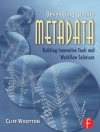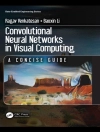This didactic book presents the main elements of acoustics, aeroacoustics and vibrations.
Illustrated with numerous concrete examples linked to solid and fluid continua, Acoustics, Aeroacoustics and Vibrations proposes a selection of applications encountered in the three fields, whether in room acoustics, transport, energy production systems or environmental problems. Theoretical approaches enable us to analyze the different processes in play. Typical results, mostly from numerical simulations, are used to illustrate the main phenomena (fluid acoustics, radiation, diffraction, vibroacoustics, etc.).
Содержание
Preface xi
Chapter 1 A Bit of History 1
1.1. The production of sound 1
1.2. The propagation of sound 4
1.3. The reception of sound 6
1.4. Aeroacoustics 7
Chapter 2 Elements of Continuum Mechanics 9
2.1. Mechanics of deformable media 9
2.1.1. Continuum 9
2.1.2. Kinematics of deformable media 10
2.1.3. Deformation tensor (or Green’s tensor) 12
2.2. Conservation laws 13
2.2.1. Conservation of mass 13
2.2.2. Conservation of momentum 14
2.2.3. Conservation of energy 15
2.3. Constitutive laws 15
2.3.1. Elasticity 16
2.3.2. Thermoelasticity and effects of temperature variations 19
2.3.3. Viscoelasticity 21
2.3.4. Fluid medium 28
2.4. Hamilton principle 29
2.5. Characteristics of materials 29
Chapter 3 Small Mathematics Travel Kit 31
3.1. Measure theory and Lebesgue integration 32
3.1.1. Boolean algebra 32
3.1.2. Measure on a σ-algebra 33
3.1.3. Convergence and integration of measurable functions 33
3.1.4. Functional space – functional 35
3.1.5. Measure as linear functional 36
3.2. Distributions 37
3.2.1. The space D of test functions 37
3.2.2. Distributions definition 37
3.2.3. Operations on distributions 39
3.2.4. N-dimensional generalization 43
3.2.5. Distributions tensor product 47
3.3. Convolution 48
3.3.1. Definition and first properties 48
3.3.2. Convolution algebra and Green’s function 50
3.4. Modal methods 52
3.4.1. Eigenmodes of a conservative system 52
3.4.2. Eigenmodes of a non-conservative system 55
Chapter 4 Fluid Acoustics 65
4.1. Acoustics equations 66
4.1.1. Conservation equations 66
4.1.2. Establishment of general equations 67
4.1.3. Establishment of the wave equation 68
4.1.4. Velocity potential 69
4.2. Propagation and general solutions 69
4.2.1. One-dimensional motion 69
4.2.2. Three-dimensional motion 70
4.3. Permanent regime: Helmholtz equation 71
4.3.1. General solutions 72
4.3.2. Green’s kernels 76
4.3.3. Wave group, phase velocity and group velocity 78
4.4. Discontinuity equations 80
4.4.1. Interface between two propagating media 80
4.4.2. Interface between a propagating and a non-propagating medium 82
4.5. Impedance: measurement and model 83
4.5.1. Kundt’s tube 83
4.5.2. Delany–Bazley model 85
4.6. Homogeneous anisotropic medium 87
4.7. Medium with a slowly varying celerity 88
4.8. Media in motion 89
4.8.1. Homogeneous medium in uniform motion 89
4.8.2. Plane interface between media in motion 90
4.8.3. Cylindrical interface between media in motion 92
4.8.4. Acoustic radiation of a moving surface 94
Chapter 5 Radiation, Diffraction, Enclosed Space 105
5.1. Acoustic radiation 106
5.1.1. A simple example 106
5.2. Acoustic radiation of point sources 107
5.2.1. Multipolar sources in a harmonic regime 107
5.2.2. Far-field 111
5.3. Radiation of distributed sources 111
5.3.1. Layer potentials 111
5.3.2. Green’s representation of pressure and introduction to the theory of diffraction 114
5.4. Acoustic radiation of a piston in a plane 119
5.4.1. Far-field radiation of a circular piston: directivity 122
5.4.2. Radiation along the axis of a circular piston 125
5.5. Acoustic radiation of a rectangular baffled structure 126
5.6. Acoustic radiation of moving sources 131
5.6.1. Compact and non-compact sources 131
5.6.2. Sources in uniform and non-uniform motion 135
5.7. Sound propagation in a bounded medium 138
5.7.1. Eigenfrequencies and resonance frequencies 138
5.7.2. The Helmholtz resonator 139
5.7.3. Example in dimension 1 140
5.7.4. Example in dimension 3 141
5.7.5. Propagation of pure sound in a circular enclosure 143
5.8. Basics of room acoustics 149
5.8.1. The concept of acoustic power 149
5.8.2. Directivity index 149
5.8.3. Reverberation duration 150
5.8.4. Reverberant fields 153
5.8.5. Pressure level in rooms 154
5.8.6. Crossover frequency and the reverberation distance 155
5.9. Sound propagation in a wave guide 156
5.9.1. General solution in a wave guide 156
5.9.2. Physical interpretation and theory of modes 157
5.9.3. Green’s function 160
5.9.4. Section change 161
5.9.5. Propagation in a conduit in the presence of flow 164
Chapter 6 Wave Propagation in Elastic Media 167
6.1. Equation of mechanical wave propagation 168
6.2. Free waves 169
6.2.1. Volumic waves 169
6.2.2. Plane wave case 170
6.2.3. Surface waves 171
6.3. Green’s kernels in a harmonic regime 176
6.4. Thin body approximation for plannar structures 177
6.4.1. Straight beams 178
6.4.2. Plane plates 186
6.5. Thin body approximation for cylindrical structures 198
6.5.1. Cylinder 198
6.5.2. Ring 212
Chapter 7 Vibrations of Thin Structures 219
7.1. Beam vibrations 219
7.1.1. Beam compression vibrations 219
7.1.2. Beam bending vibrations 223
7.2. Plate vibrations 233
7.2.1. Infinite plate 233
7.2.2. Finite plate 239
7.2.3. Plate of arbitrary shape 256
7.3. Cylindrical shell vibrations 260
7.3.1. Infinite shell 260
7.3.2. Finite shell 264
Chapter 8 Acoustic Radiation of Thin Plates 275
8.1. First notions of vibroacoustics: a simple example 276
8.1.1. Motion equations 277
8.1.2. Acoustic radiation 278
8.1.3. “Light fluid” approximation 280
8.1.4. Sound transmission 281
8.1.5. Transient regime 290
8.2. Free waves in an infinite plate immersed in a fluid 294
8.2.1. Roots of the dispersion equation 295
8.2.2. Light fluid approximation 297
8.3. Transmission of a plane wave by a thin plate 299
8.4. Radiation of an infinite plate under point excitation 302
8.4.1 Integro-differential equation with respect to u 303
8.4.2 Fourier transform of u 303
8.4.3 Calculation of u(r) 305
8.4.4. Radiated acoustic pressure 306
8.5. Acoustic radiation and vibration of finite plates 307
8.5.1. Statement of the problem 307
8.5.2. Exact methods 308
8.5.3. Light fluid approximation 313
8.5.4. Higher order approximations 319
8.6. Heavy fluid coupling: resonance estimation 327
8.6.1. Clamped rectangular plate coupled with a heavy fluid 327
8.6.2. Location of resonances of a coupled plate 343
8.7. Vibrations of a thin plate in a turbulent flow 346
8.7.1. Interspectral density: simple models 347
8.7.2. Green’s representation of a coupled plate 350
8.8. Aeroelastic coupling and sloshing 354
8.8.1. Sloshing 354
8.8.2. Convective instability 356
8.8.3. Kelvin–Helmholtz instability 360
Chapter 9 Basic Theoretical Aeroacoustics Models 363
9.1. Preamble 363
9.2. Lighthill’s equation and some of the generalizations that have followed 365
9.3. Reminder of some notions on turbulence which will be useful here 376
9.4. The Proudman model for homogeneous and isotropic turbulence 381
9.5. The Lilley model for homogeneous and isotropic turbulence 386
9.6. The recent models and a few experimental validations 387
9.7. The Powell–Howe equation for vorticity-generated sound 397
Chapter 10 A Few Situations Closer to Reality 403
10.1. The Ribner model for jets 403
10.2. Problems and approaches specific to boundary layers 416
10.3. Flame-generated noise 426
10.4. Noise generated by blades 432
10.4.1. Noise generated by a solid body in motion, in the temporal domain 433
10.4.2. Noise generated by a set of rotating blades and fixed cascading blades, in the frequency domain 440
10.4.3. Noise generated by blade–vortex interaction, using the vortex sound generation method 449
10.5. Noise generated and propagation in the outer atmosphere: accounting for the thermal stratification and for likely obstacles 454
10.5.1. Characteristic properties of the atmospheric boundary layer and impacts on sound propagation 455
10.5.2. Models of sound wave propagation in the atmosphere 464
Chapter 11 Implementation and Usage of Numerical Simulations 475
11.1. Hybrid methods 476
11.2. Direct numerical simulations/large eddy simulations 478
11.3. Conclusion 488
Bibliography 491
Index 507
Об авторе
Fabien Anselmet is Professor at Ecole Centrale de Marseille in France. His research focuses on fluid turbulence and its numerous applications in the fields of industry and the environment.
Pierre-Olivier Mattei is a CNRS researcher at LMA in Marseille, France. He leads research activities that aim towards a better understanding of the physics of acoustic radiation and fluid-structure interaction.












